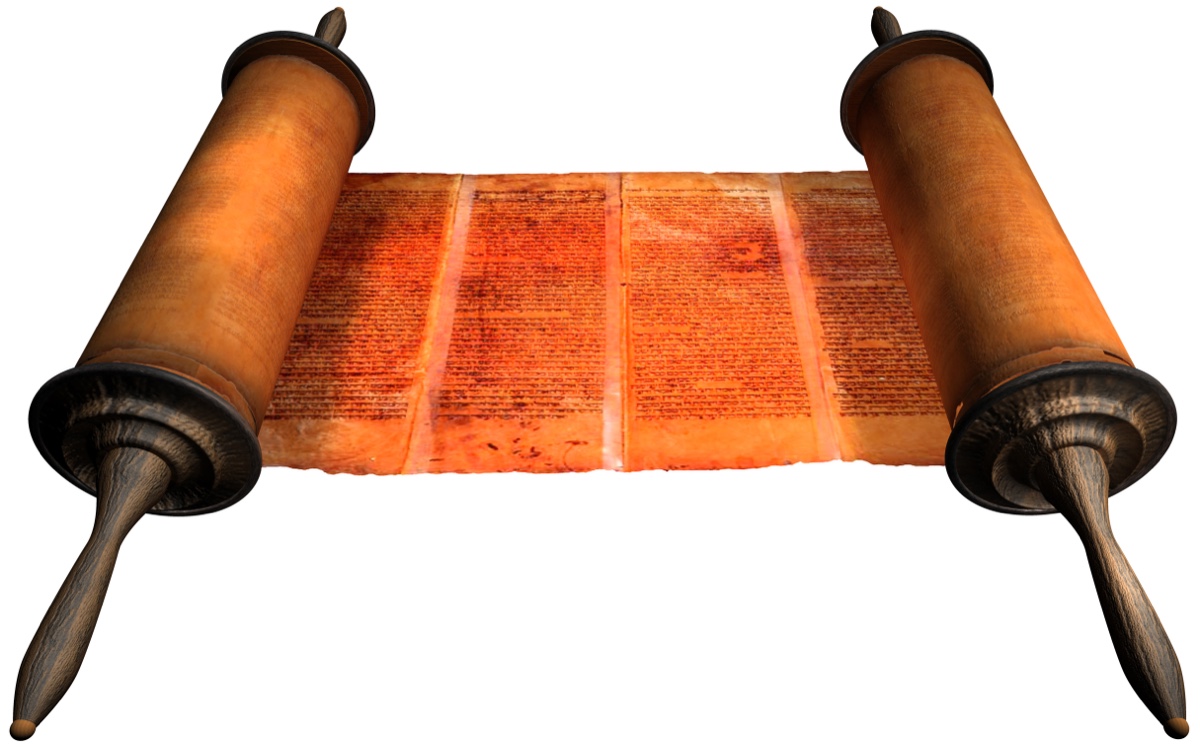By Steve Wolfgang
Synopsis: Tracing the evolution of written communication from antiquity to Gutenberg and the printing press to the digital transformation of the last forty years, Steve focuses on how these changes have benefited the spread of the gospel.
The evolution of written communication through the centuries has intrigued many. This article traces aspects of that evolution from ancient media (including cuneiform, papyrus scrolls, and vellum parchment produced in a scriptorium) to the revolution generated by Johannes Gutenberg and the printing press to the digital revolution of the last forty years—including how these changes benefited the spread of God’s revelation.1
When I conduct tours as a Docent at the University of Chicago’s Oriental Institute, the artifacts themselves bear mute but powerful witness to these changes. This most extensive Near Eastern archaeology museum in North America contains many examples of how written communication was accomplished, and changed, across the millennia of ancient history. Those artifacts include cuneiform inscriptions on clay tablets (and on a forty-ton stone lamassu from the palace of the Assyrian king, Sargon); a brick from Babylon with the cartouche of Nebuchadnezzar; pottery shards used as written receipts; Egyptian papyri; a fragment of one of the Dead Sea Scrolls from Qumran; legal texts on vellum; a practice board for young scribes with a text from Matthew 6 still visible; and many other examples of various media used throughout history to communicate important concepts and events.2
Modern attempts to catalogue the meaning of many of these inscriptions also illustrate how present-day efforts to understand ancient communication have undergone significant change in the last century. For instance, the Chicago Assyrian Dictionary (an encyclopedia of ancient inscriptions and documentary writing in cuneiform) itself illustrates the evolution of modern technologies in service to ancient writing. Begun in 1921 by Oriental Institute founder James Henry Breasted as a handwritten card file, the project evolved through typewriter script and ultimately offset printing, then to digital media (CD-ROM), and presently to an online digital format. The final volume (of 27) of this encyclopedic work was finally completed after ninety years, in 2011—just in time for the printed volumes to become available on the Web.3
As various forms of these ancient writing formats were superseded by another, there were always some who mourned the demise of the “old reliable” formats and emphasized the shortcomings of the new-fangled media. The purpose and content of legal documents, personal letters, official proclamations did not change, but the means of delivery and consumption have always been subject to change and revision. Many such changes have been adapted to the dissemination of biblical documents.
Biblical accounts themselves were recorded, preserved, and circulated among ancient Israelites. For instance, when the Mosaic covenant was so broken that God announced a New Covenant (Jer. 31; Heb. 8) and used the Babylonians to put Israel back into bondage, God predicted the years of their captivity to Jeremiah, which was then read by Daniel and led to his powerful penitential prayer of Daniel 9.
While stone inscriptions and ceramic media are more durable, scribal copying of documents on papyri, vellum/parchment (tanned animal skins), or other portable media became the preferred means of preservation and communication for centuries, across many cultures. The transition to codex (book) formats replacing scrolls is instructive. During the era of the Roman Empire, the scroll was rotated into a horizontal orientation and then folded and bound, producing an early form of a book known as a codex.
A codex has many obvious advantages over scrolls, including convenience, ease of transport, and greater capacity (both sides of a page could be written on, more documents and greater page-count included in the binding, etc.). Equally important was the speed and ease with which specific passages could be located.4 Its compact size made the codex indispensable for tasks like evangelizing, as well as being advantageous to professionals such as lawyers and judges. Additionally, a codex had a durable cover, offering greater protection to the text than a scroll.
Scrolls are certainly more cumbersome: imagine carrying around a basket of dozens of scrolls of biblical writings as opposed to a handheld, bound volume containing all the biblical texts. Nevertheless, scrolls had some occasional advantages. When Jesus read from an Isaiah scroll in Luke 4:17-20, some early English translations (KJV, ASV, NKJV, but also the CEV) render it as “He opened/closed the book.” In fact, while “the eyes of all the synagogue were upon Him,” the Lord was actually rolling, and rolling. . . and rolling about twenty feet of scroll. Yet, despite the role of traditional scrolls, the advantages of a codex/book format became apparent to all concerned.
The advantages of the codex/book format were multiplied with the advent of moveable-type printing presses, which allowed for rapid composition and reproduction of copies. Gutenberg’s dual innovations of movable metallic type and the printing press which utilized it revolutionized the production of books and documents, allowing for increased accuracy and reduced cost per page. These innovations stimulated literacy and scholarship and introduced the concept of mass media, which has so dramatically shaped thought in the modern world.5
The Bible itself has followed a similar pattern in terms of how its content is delivered and consumed by readers—from stone tablets to papyrus to hand-copied codex to letter-press to offset printing to digital iterations.6 I still read from the Bible in book form, including several translations formatted by verses and/or paragraphs. However, I also enjoy some recent “readers’ editions” which omit chapter/verse divisions and encourage reading an entire gospel or letter without such interruptions, in a manner more like original readers would have experienced it. Bette and I also profit from listening in the car, or before bedtime, to digital recordings of various biblical translations. Admittedly, hearing Johnny Cash read the New King James Version is a bit of a trip; we rather like hearing Irish hymnist Kristyn Getty reading the ESV with a lovely Gaelic lilt. Yet, while the medium varies, the content remains the same.
Similar transitions have occurred in magazine publishing, which often allowed for relatively quick interaction among readers: a snail-mail discussion board of sorts. Early “restorationist” preachers used the Constitutional establishment of the Post Office (Article One, Section Eight) to deliver far and wide, and inexpensively much written content for Bible study, abetted by special permits for regular bulk mailing. My own magazine consumption includes not only religious and history publications, many of which are trending toward digital publication, but also Newsweek and National Review (news from both sides of the political spectrum), which offer both print and digital. While I like the feel of a printed publication, I love the ability to access many such publications on an electronic device when away from home.7
Truth Magazine itself has appeared in multiple formats during its 66-year history, and some of the changes were not without resistance. Beginning as a monthly small-format magazine printed on glossy paper, it has also appeared in a larger 8.5x11-inch weekly, as well as a twice-monthly iteration, before returning to the glossy-paper monthly of its current format. After merging with the Gospel Guardian (which was about to be discontinued after its own run of more than forty years) it was known ponderously as Guardian of Truth before resuming its native title. At each one of these transitions, there were some who protested shifting to new formats.
As Truth Magazine transitions to become an exclusively digital publication, it retains the same editorial staff, is overseen by the same board of directors, and adheres to the same biblical teaching as before. The medium changes; the message remains the same—with possibilities for much more such content to become available. Happy reading!
Highlights from the Collection: Assyria | The Oriental Institute of the University of Chicago
A useful survey is Barry B. Powell, Writing: Theory and History of the Technology of Civilization (Oxford: Wiley-Blackwell, 2012).↩︎
An early account of the discovery and translation of cuneiform is Edward Chiera, They Wrote on Clay: The Babylonian Tablets Speak Today (University of Chicago Press, 1938). I purchased a copy when it was still in print, on my first visit to the Oriental Institute in 1968, on a Florida College chorus trip with Bette. It is now available by digital download at https://oi.uchicago.edu/research/publications/misc/they-wrote-clay-babylonian-tablets-speak-today.↩︎
Jeffrey Abt, American Egyptologist: The Life of James Henry Breasted and the Creation of His Oriental Institute (University of Chicago Press, 2011), chronicles the work of the Institute not only in excavating and collecting artifacts, but publishing the linguistic and historical encyclopedias and dictionaries. Perhaps less spectacular than monumental artifacts, these works do the “heavy lifting” to determine what those artifacts mean.↩︎
As many have experienced, even digital “scrolling” through a document can be cumbersome, as opposed to turning directly to a specific page.↩︎
A classic account is Marshall McLuhan, The Gutenberg Galaxy: The Making of Typographic Man (University of Toronto Press, 1962); see also Richard Abel, The Gutenberg Revolution: A History of Print Culture (Routledge, 2017).↩︎
Some advantages and shortcomings of print vs. digital reading are discussed by John B. Weaver, “The Bible in Digital Culture,” in The Oxford Handbook of the Bible in America, ed. Paul C. Gutjahr (New York: Oxford University Press, 2017), pp. 149-162, LOGOS edition. See also Ferris Jabr, “The Reading Brain in the Digital Age: The Science of Paper versus Screens,” Scientific American (April 11, 2013), available online at https://www.scientificamerican.com/article/reading-paper-screens/↩︎
Interestingly, one of the few print-only publications—not yet available digitally—is Bible Study Magazine, published by LOGOS Bible Software.↩︎


